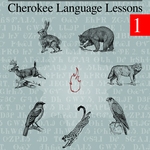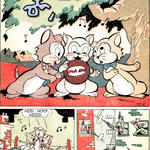- Ꮒ- + Ꮥ- becomes ᏂᏗ-
☞ The Ꮒ- prefix can indicate “next to the speaker’s point of reference in a lateral position”.
In the “Cherokee-English Dictionary”, this point of reference is called “the speaker’s position”.
In the “A Reference Grammar of Oklahoma Cherokee”, this point of reference is called “the deictic center”.
In many cases the prefix “nị-” is used to indicate “beside” or “next to”.
Assume the point of reference is in relation to the speaker unless context indicates otherwise.

